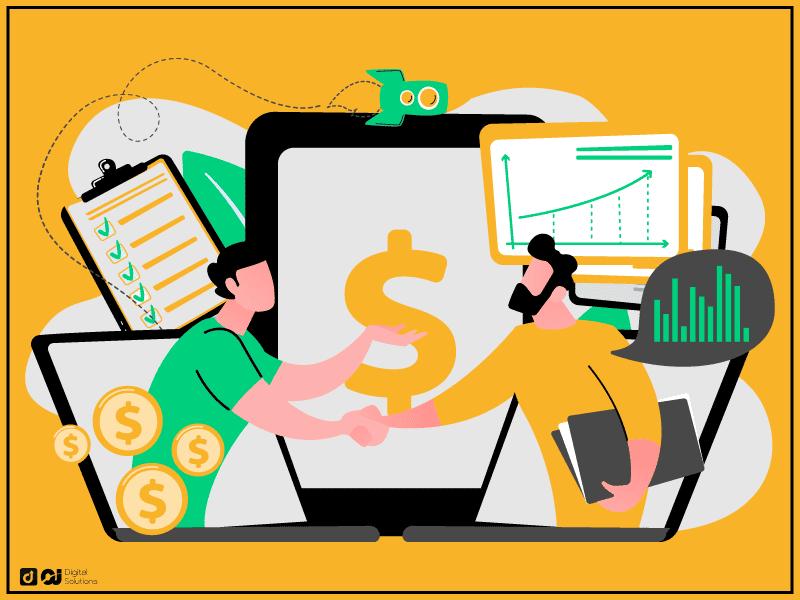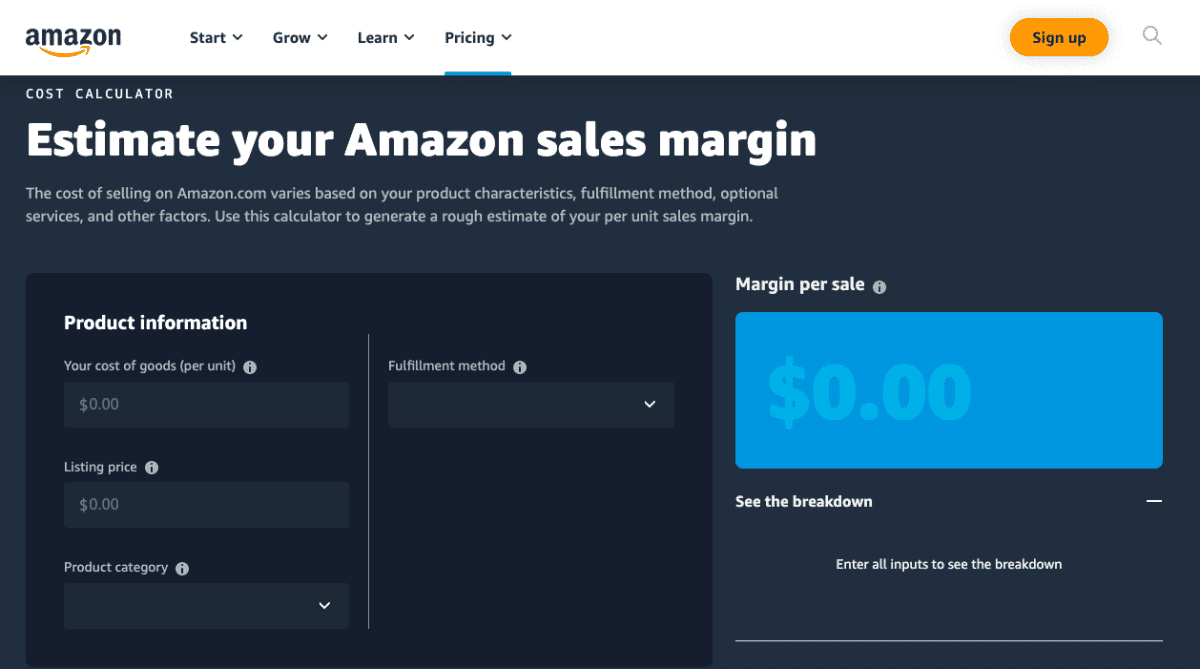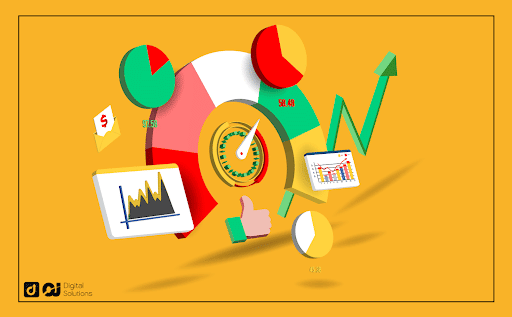If you’re an Amazon seller, you know pricing is critical to your success.
Amazon is always changing its pricing model to stay ahead of the curve, so business owners must keep up.
In this article, I will discuss creating an Amazon pricing strategy and how you can adapt your business to stay on top.
We will also review some Amazon pricing techniques and how to use them to your advantage.
When you’re all set, let’s begin.
What Is the Amazon Pricing Model?
The Amazon pricing model is a constantly changing algorithm that determines the prices of products sold on the platform.
It considers several factors, like the cost of goods, shipping costs, seller fees, and more.
To stay competitive on Amazon, it is important to have a good understanding of how their pricing model works.
This knowledge will allow you to price your products to maximize your profits while staying within Amazon’s guidelines.
One thing to note about Amazon’s pricing model is that it focuses on the most competitive product prices.
It aims to keep prices as low as possible so that Amazon customers will continue to use the platform. This can be good for buyers, but it can make it difficult for sellers to profit.
For sellers, it means they must constantly monitor competitor prices and adjust as needed.
One feature that significantly contributes to the success of Amazon’s pricing model is the Buy Box.
This is the box on a product listing that allows customers to add the item to their cart and purchase it. We’ll talk more about this later.
The pricing model that Amazon uses is highly advantageous to its customers.
By keeping prices low and items rarely ever going out of stock, Amazon can attract and retain a large customer base.
This, in turn, helps the company generate more revenue through other channels, such as advertising and third-party sellers.
Why Is Pricing on Amazon So Important?
Pricing on Amazon is one of the most important aspects of selling on the platform. It can be the difference between a successful business and one that quickly fails.
There are a few reasons why pricing is so important on Amazon:
- It helps you stay competitive: As I mentioned before, Amazon’s pricing model focuses on the most competitive prices. Having the ability to adapt to competitor pricing is crucial to staying ahead of them.
- It attracts customers: Customers are always looking for the best deal possible. By offering competitive and attractive prices, you can pull in more customers to your listings.
- It helps you generate revenue: A successful Amazon pricing strategy can help you steadily increase your revenue, which can be reinvested back into your business.
What Are Pricing Tactics?
A price tactic refers to a specific strategy that you can use to manipulate the price of products for a particular business objective.
There are a few different pricing tactics that you can use. Your goals and objectives will determine which one is best for your business.
Some of the most common pricing tactics include:
- Competition-based pricing: Pricing your products based on what your competition is charging
- Cost-plus pricing: Pricing your products based on the cost of goods plus markups
- Value-based pricing: Pricing your products based on the perceived value of the product. This is a common tactic used by luxury brands, as it allows them to charge premium prices for their products
How to Calculate the Best Price For a Product?
Calculating the best price for a product is not an exact science.
There are a few different factors that you must consider when setting your prices, such as the cost of goods, shipping costs, and competition.
The best price for your product has to be both profitable and competitive.
One way you can determine this is by looking at your profit margin which can be calculated using this formula:

Expenses include the cost of goods, shipping, and other associated costs.
Once you have your profit margin, you can compare it with your competitors to see if your product is priced appropriately.
If it’s lower than your competitor’s, you might need to raise your prices.
If it’s higher, you can lower your prices and still be profitable.
Once you have a good understanding of your costs, you can start to set your prices.
It’s important to remember that you need to make a profit on each sale, so double-check if all your costs have been accounted for before proceeding.
Amazon Pricing Strategies for Sellers
Let’s take a look at some pricing strategy options for Amazon sellers:
Amazon Dynamic Pricing Strategy
Amazon offers a dynamic pricing option for sellers that allows them to automatically adjust their prices based on real-time market conditions.
Sellers who want to stay competitive without constantly monitoring their prices will find this helpful.
Having a dynamic pricing model means that price readjustments will happen automatically as customer demand and your competition’s prices fluctuate.
New sellers often find this helpful as it allows them to focus on other areas of their business without worrying about price changes.
Pay Attention to Supply and Demand
The law of supply and demand is a basic economic principle that drives price changes for goods and services.
When there is more demand for a product than there is available supply, prices will go up. Conversely, prices will go down when supply is higher.

Use this knowledge to your advantage when setting prices for your products on Amazon.
If you see that there is a lot of demand for your product and not a lot of available supply, you can raise your prices.
On the other hand, if you see that there is more supply than there is demand, lowering your prices may attract more buyers.
Don’t Price Too Low (or Too High)
Obviously, lower prices will attract more buyers and make more sales. Lowering your prices can pay off if there is a lot of competition for your product.
However, be careful not to price your products too low.
Doing so will not only reduce your profits, but also distort customers’ perception of your product quality.
The same concept applies to increasing your prices.
You can use a price increase to improve your product’s perceived value in the eyes of buyers.
For example, if you sell a luxury item, a price increase can help communicate this to them.
Of course, higher prices will get you higher profits, but setting them too high can drive customers away. It’s better to make smaller profits than none at all.
Customer Centric Pricing
Customer-centric pricing is a strategy where you price your products based on what your target market is willing to pay.
This involves researching your target market to determine their magic number so you can set your prices accordingly.
This strategy is effective if you want to ensure that you are making a profit on each sale.
However, it is important to remember that your target market may not always be willing to pay the price you want.
Be flexible with your prices, be open to adjustments, and listen closely to customer feedback.
Pricing Tools That Can Help You
Amazon Pricing Calculator
This is a great tool to help you determine most profitable price for your product.
This tool takes your product’s cost, shipping costs, and Amazon fees into account.
It then calculates the most profitable price for your product based on those values.
You can use the Amazon Pricing Calculator to test different prices for your product and see which price point is most profitable. This tool is a great way to optimize prices and maximize profits.

Amazon Automate Pricing
With Automate Pricing, you can automatically adjust the prices of SKUs in your catalog in response to things like the Buy Box price without having to go back to each SKU individually.
To use it, you’ll have to create a pricing rule, specify its requirements, and then decide which SKUs it applies to.
This is so that automated pricing only affects the SKUs that you specify, not the whole catalog.
You can alter your rules or the SKUs to which your rules apply and start or stop automated pricing rules.
By specifying rule parameters, establishing the minimum and maximum price (optional) boundaries, and choosing the SKUs to automate pricing, you can regulate the prices more easily.
If you do not specify a maximum price, Automate Pricing will safeguard consumer confidence on your behalf.
It does this by ensuring that your offers are not marked up significantly above recent costs to maintain their eligibility to be the Featured Offer.
Repricing With Algorithms
Repricing with algorithms is a process where you use software to automatically adjust your prices based on several different factors like competitor prices, market trends, and customer demand.
There are many different software programs that offer repricing services. Some of the most popular options include Amazon Repricer and PriceWaiter.
What Is Intelligence Node’s Take On Dynamic Pricing For Amazon?
In the age of comparison shopping, dynamic pricing is a highly successful pricing strategy both on and off Amazon.
Dynamic pricing doesn’t always need to mean offering the lowest price or reducing margins in order to remain competitive.
A financially viable dynamic pricing strategy uses advanced, instinctive technology to exploit pricing gaps left by rivals.
It then quickly and precisely adjust prices to increase conversions, safeguard margins, and boost profitability.
What Are the Different Types of Amazon Pricing?
There are four different types of pricing on Amazon: retail price, list price, minimum advertised price, and Buy Box price.
- Retail price: The price that you set for your product. This is the price that customers will see when they view your product listing.
- List price: The price that you set for your product minus any discounts or promotions. This is the price that customers will see when they search for your product on Amazon.
- Minimum advertised price: The lowest price for which you can advertise your product. This is set by the manufacturer or Amazon and cannot be lower than this price.
- Buy Box price: The price that customers will see when they add your product to their cart. This is the price that you set for your product plus any shipping price and handling charges. The Add to Cart or Buy Now buttons are located in the Amazon Buy Box, which is the white box on the right side of the product detail page.
Winning the Buy Box on Amazon
Oftentimes, placement in the Buy Box can boost sales for sellers. It is a highly coveted spot for this reason.
For a seller’s product to be eligible for the Buy Box, the seller must meet certain criteria like a competitive price.
The fact that different sellers on the Amazon website can offer the same item for purchase is a crucial element of Amazon’s model.
As long as it can be shipped to the customer’s chosen address, multiple sellers who offer the same product in “new” condition may be able to compete for the Buy Box.
Sellers must comply with performance-based prerequisites for eligibility to start competing for Buy Box placement.
They must also be able to and provide customers with an excellent shopping experience.
Here are a few things that you can do to increase your chances of winning Buy Box on Amazon:
- Have a professional seller account: Rather than using an individual seller account, upgrade to a professional seller account. This will give you access to more features and benefits that can help you win the Buy Box.
- Offer competitive prices: If your prices aren’t competitive, you can’t win it. Study your competitors’ prices and offer lower prices if possible.
- Build a good seller rating: Amazon favors sellers with good seller ratings. Make sure that you are providing the best customer service and fulfilling orders in a timely manner.
- Use Fulfilment by Amazon (FBA): FBA is a service offered by Amazon that allows you to store your products in their fulfillment centers. FBA pricing strategies can help you win the Buy Box as Amazon knows it can deliver items efficiently from its warehouses.
- Provide exceptional customer service: Amazon favors sellers with great customer service. Be sure to respond to customer queries and resolve issues quickly and properly.
The Bottom Line
If you want to be successful with selling on Amazon, you need to find a pricing strategy that works for you and your business.
Be sure to consider all of the different types of Amazon pricing strategies before making a decision.
It’s also important to remember not to stick to just one strategy. What works today may not tomorrow. Learn as you go.
Additionally, always aim to win the Buy Box as it can boost your organic sales significantly.
Combine that with having a reliable pricing strategy, and you’ll be all set for success.




